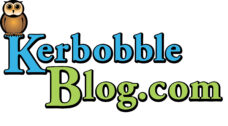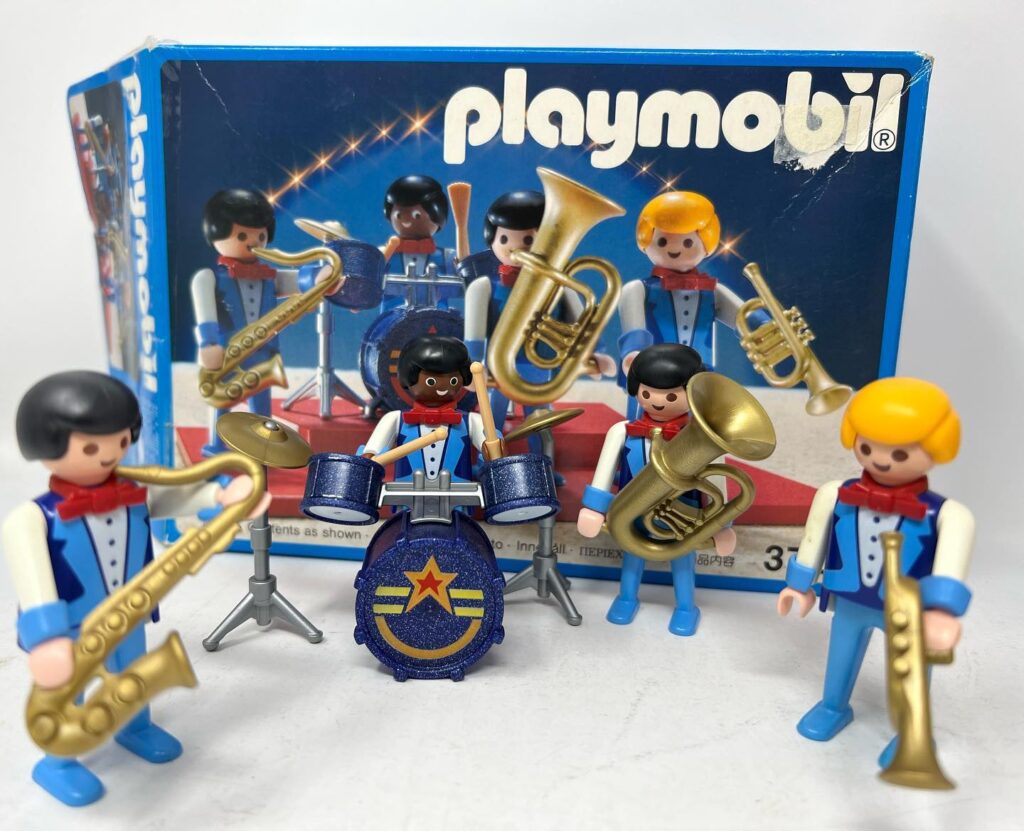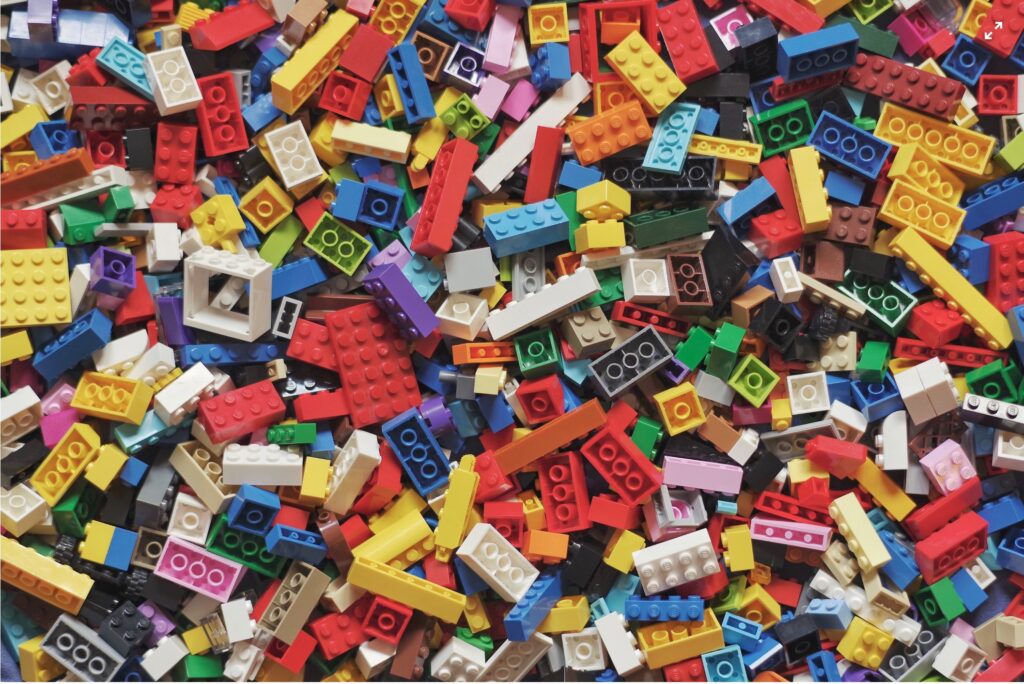
Lego, the iconic plastic toy, has captured the hearts and minds of people around the world for generations. With its limitless possibilities for creativity and innovation, Lego has become more than just a toy—it’s a cultural phenomenon. In this blog, we will delve into the history of the brand, tracing its journey from a modest Danish workshop to a global powerhouse.
The Birth of Lego (1932-1958)
The Lego story begins in the early 1930s in Denmark. Ole Kirk Christiansen, a skilled carpenter, founded a small workshop in Billund, Denmark, where he crafted wooden toys and household items. Eventually, he created the first Lego bricks.
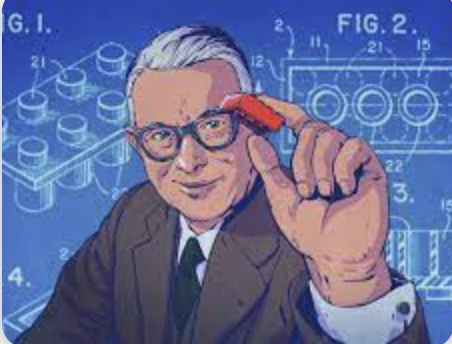
The Visionary Founder
Kirk Kristiansen, the founder of the ‘Lego Group’ (TLG), was a visionary and a pioneer in the world of toys. His story is integral to the history of the company, shaping its values, ethos, and innovative spirit.
Born in 1891 in Filskov, Denmark, he came from a modest background. He was a carpenter and joiner, known for his craftsmanship and attention to detail.
From Wood to Plastic:
Ole’s journey began with wooden toys, ironing boards, and other household items. In the 1940s, he transitioned to plastic production, introducing the first automatic binding bricks.
During the 1940s, the workshop transitioned from wooden toys to plastic production. In 1949, the company adopted the name LEGO, derived from the Danish phrase “leg godt,” which means “play well.” The name is derived from the Danish phrase “leg godt,” which means “play well.”
Ole’s commitment to quality and innovative thinking laid the foundation for what would become one of the most iconic and beloved toy companies in the world. He believed in the power of play and the importance of learning through creativity.
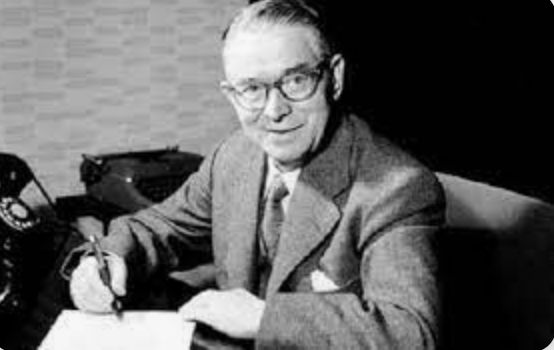
The Role of Ole Kirk Kristiansen: Ole played a crucial role in shaping the company’s values, work ethic, and Lego brand. He instilled in his employees a dedication to quality and a commitment to the highest standards.
In 1958, Ole passed away, leaving behind a legacy that would continue to shape the group for generations to come. His vision for the company was carried forward by his son and future generations of the Kristiansen family.
The Early Years & The First Plastic Brick:
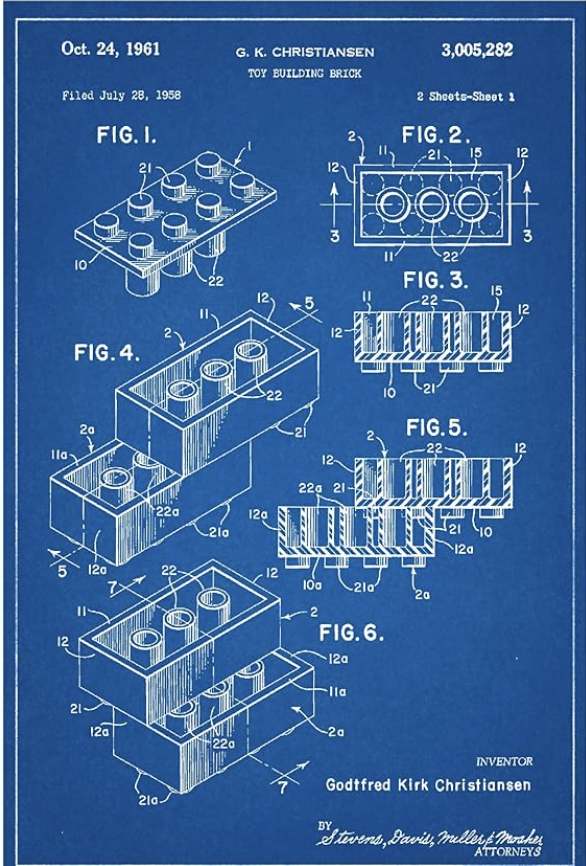
Ole’s son, Godtfred Kirk Christiansen, made a significant breakthrough in 1958 when he patented the design for the first interlocking plastic brick with studs on the top and tubes on the bottom. He built on his father’s vision by patenting the design for the first interlocking plastic brick. This would become the standard ‘brick.’
The Brand’s Evolution (1958-1990)
The Group’s Motto:
The motto, “Only the best is good enough,” is a testament to Ole Kirk Kristiansen’s dedication to quality and innovation. This motto remains a guiding principle for the company.
The story of Ole Kirk Kristiansen is one of vision, perseverance, and a commitment to quality. His legacy lives on in the group’s enduring values, dedication to creativity, and the belief in the power of play. Ole’s journey from a small Danish workshop to the global phenomenon that it became, is a testament to the impact of one man’s innovative spirit and his dedication to creating a better, more imaginative world for children and adults alike.
The Introduction of the System: The patented design marked the beginning of the main brick system. This innovation allowed the bricks to connect firmly, providing stability and endless possibilities for building.
Themed Sets: In the 1960s, they introduced themed sets with instructions, paving the way for children to build specific models. This development expanded the play experience beyond simple structures.
The Iconic Minifigure:
In 1978, the now famous minifigure was introduced, a small, articulated figure that would become a staple in all sets and all themes, including space, town, and castle.
Thematic Expansion:
The 1980s saw the company exploring a wide range of themes, from pirates to space exploration, giving children the opportunity to immerse themselves in various worlds.
Education:
In 1980, TLG began focusing on education with the introduction of the ‘Lego Educational Division’, offering innovative learning solutions for schools and classrooms.
The Lego Factory
As the demand for bricks grew, so did the need for a dedicated production facility. The first factory was in Billund, Denmark. This marked a significant step in the evolution of their production.
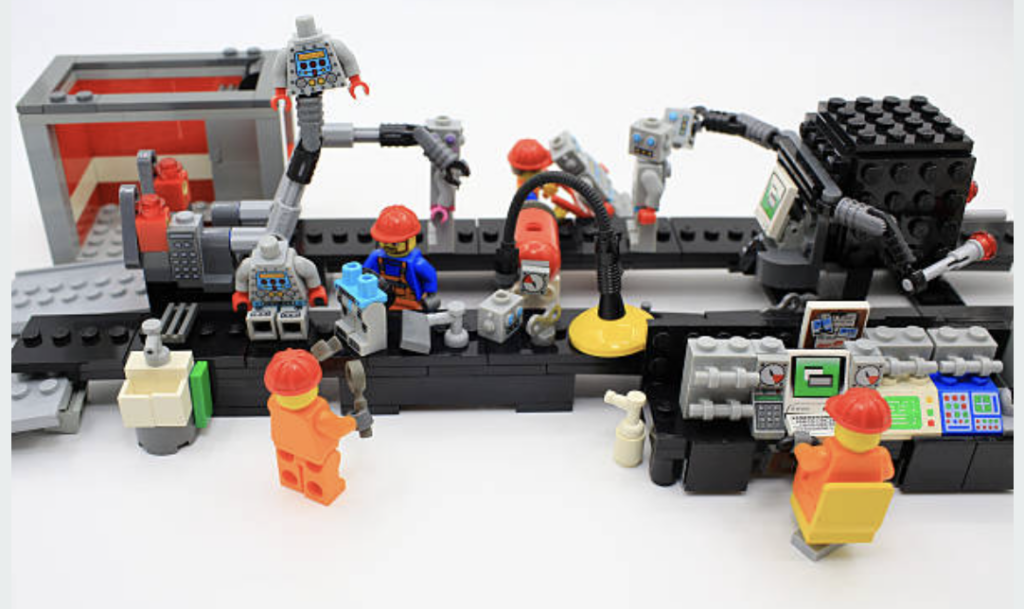
The Mass Production Revolution:
The factory introduced the concept of mass production to the world of toys. The use of a plastic injection molding machine allowed for the rapid and consistent production of bricks.
The Manufacturing Process:
Legos are produced by melting plastic granules and injecting the molten plastic into molds. They cool and solidify to form the familiar brick shape. This automated process ensures precision and consistency.
Elements and the Factory:
The factory’s production lines are designed to create a wide range of elements. From the standard bricks to specialized pieces like wheels, windows, and minifigure accessories. The versatility of the production process allows for a diverse product line.
The Iconic Logo:
Each brick is imprinted with the iconic Lego logo, a mark of quality and authenticity. This stamp ensures that every brick meets the brand’s rigorous standards.
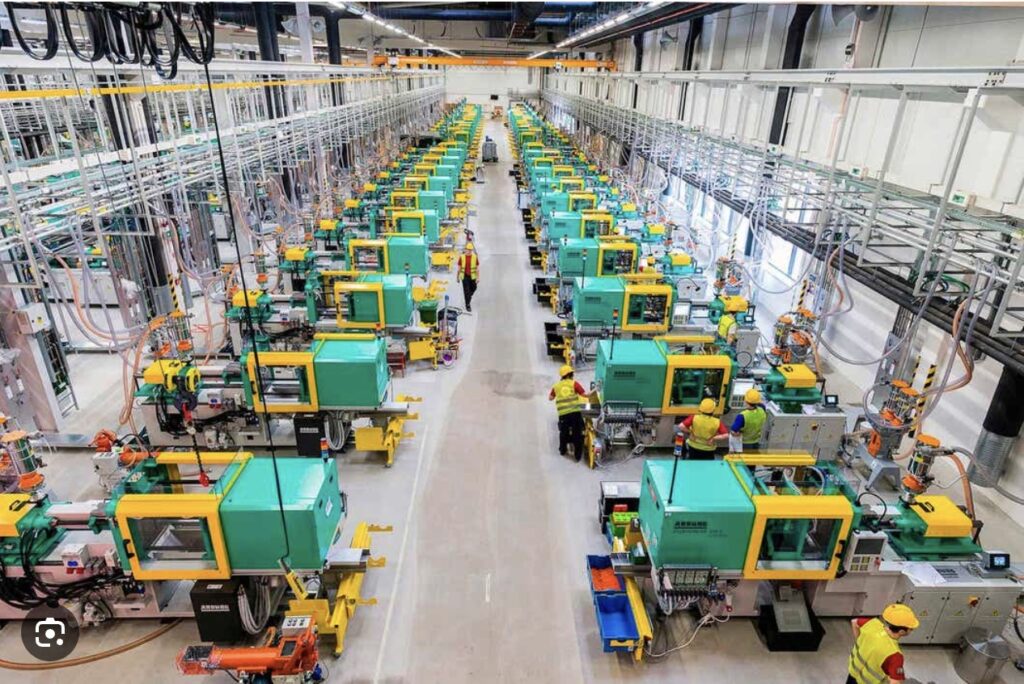
Continuous Innovation:
Over the years, the factory has seen significant advancements in automation and quality control. TLG has invested in cutting-edge technology to ensure that its products maintain their high standards of quality and playability.
International Expansion:
As its popularity grew, so did the need for additional manufacturing facilities around the world. TLG established production plants in various countries to meet the global demand for its products.
The Factory Today:
Today, the factories are high-tech hubs of production. They produce billions of elements annually. Thus supplying the world with the bricks that fuel the imaginations of children and adults alike.
Environmental Responsibility:
In recent years, TLG has also focused on making its manufacturing processes more environmentally friendly. The company is committed to sustainability and reducing its carbon footprint.
Visiting Lego Factories:
The Billund factory offers tours to visitors. This gives a behind-the-scenes look at the fascinating process of creating the bricks. These tours have become popular attractions for fans of all ages.
The factory is not just a place of production; it’s a symbol of innovation and quality, as it continues to adapt to the ever-changing world. It remains at the heart of the company’s mission to inspire and develop the builders of tomorrow. Its commitment to excellence and creativity is a testament to the enduring legacy of the brand.

The Challenges and Resilience of The Brand (1990-2000)
Facing Financial Turmoil:
The late 1990s brought challenges for the brand as it struggled financially. Changes in leadership and a misguided expansion into various non-brick-related ventures led to financial woes.
A Return to the Core:
In the early 2000s, TLG returned to its core product—the interlocking bricks. A renewed focus on innovation, product quality, and core values helped them to stabilize.
The Renaissance and Global Dominance (2000-Present)
Licensing and Media:
TLG’s entry into licensing agreements with popular franchises like Star Wars and Harry Potter opened up a new avenue of growth for the Lego products. It also ventured into media with successful video games and movies.
Mindstorms:
In 1998, TLG introduced the ‘Mindstorms’ line, a platform for building programmable robots. This marked a significant step towards merging play with technology and engineering.
The Lego Group’s Expansion:
TLG has grown into a global enterprise with manufacturing facilities, theme parks, and educational initiatives around the world. It remains committed to its core values of creativity, imagination, and learning through play.
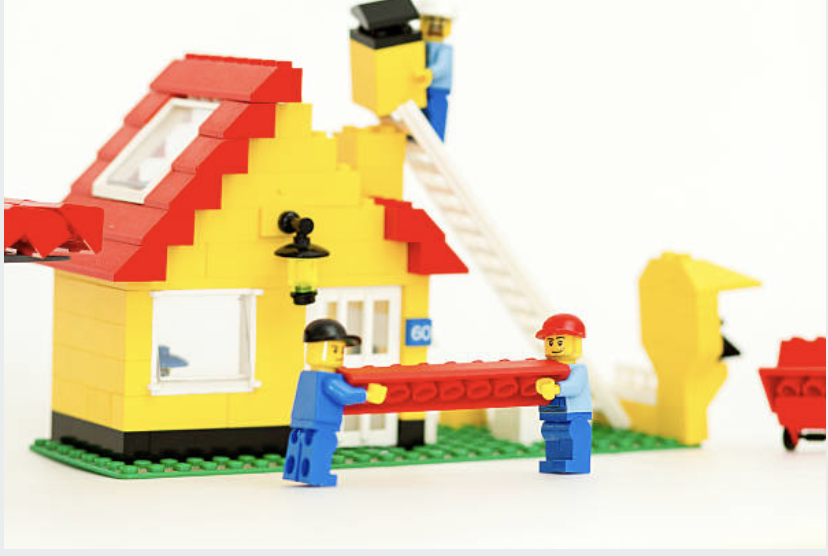
The Impact and Legacy of Lego
Educational Value:
Lego has not only been a source of entertainment but also an educational tool. It is used in schools to teach concepts in science, technology, engineering, and mathematics (STEM).
Cultural Impact:
The company has left an indelible mark on pop culture. It has inspired art, architecture, and even adult enthusiasts who create intricate, large-scale models.
The brand is known for its social responsibility initiatives, including sustainability efforts to reduce its carbon footprint and promote diversity and inclusivity in its products and marketing.
Community and Fan Engagement:
They have a passionate and dedicated fan community. ‘Adult Fans of Lego’ (AFOL) communities around the world organize exhibitions and events to showcase their creations.
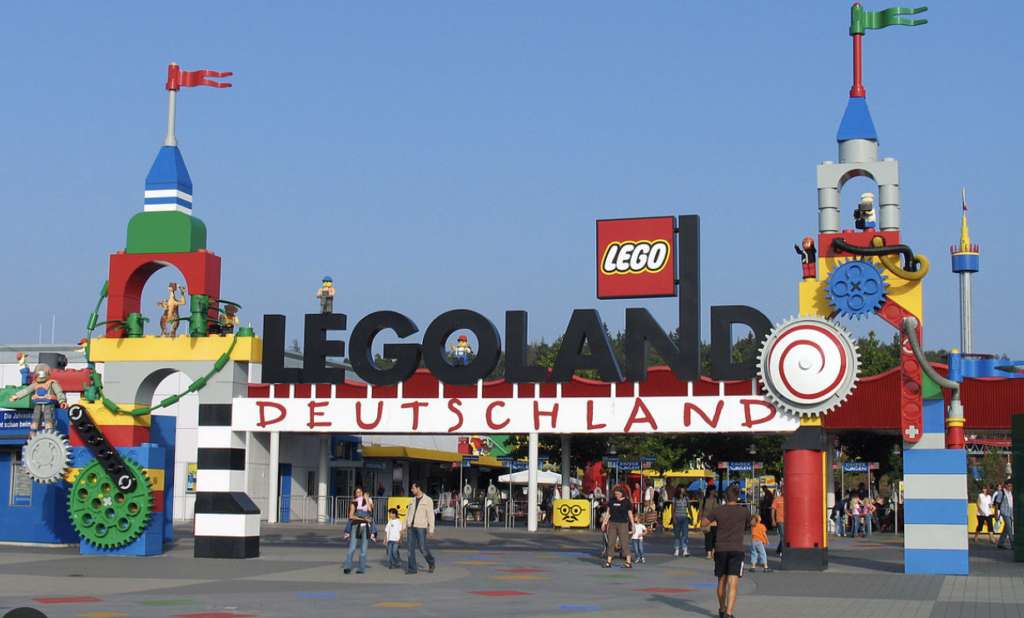
Lego Amusement Parks – Bringing Lego to Life
Their expansion included the creation of Legoland theme parks in various locations around the world. These parks offer visitors an immersive experience in the world of the brand.
The Lego Landmark:
Lego’s foray into the world of amusement parks began with the opening of the first Legoland theme park in Billund, Denmark, in 1968. Legoland Billund was a groundbreaking concept that combined the magic of the brand with the thrill of amusement park rides.
Expanding the Magic:
Following the success of Legoland Billund, the brand expanded its theme park presence, with Legoland Windsor opening in the United Kingdom in 1996, and Legoland California following suit in 1999.
Theme Parks:
Legoland theme parks are designed to immerse visitors in the world of Lego. These parks feature a wide array of attractions, including interactive rides, life-sized Lego sculptures, and miniature Lego model displays.
Discovery Centers:
In addition to full-scale theme parks, Legoland Discovery Centers have been established in various locations, providing a unique indoor experience. These centers often include Lego-themed rides, play areas, and 4D cinema experiences.
Lego-Themed Attractions:
Each Legoland park offers a variety of Lego-themed attractions, from thrilling roller coasters to educational experiences that promote creativity and learning through play.
Lego Star Wars Miniland:
Many Legoland parks feature a Lego Star Wars Miniland, where visitors can explore detailed scenes and characters from the Star Wars universe built entirely from Lego bricks.
Lego amusement parks represent an extension of the brand’s commitment to creativity, imagination, and learning through play. These parks have become destinations for families to create lasting memories and immerse themselves in the world of Lego. The company continues to innovate and expand its presence in the world of entertainment and education, and the magic of amusement parks will continue to inspire and captivate visitors of all ages. Whether exploring miniature cities or experiencing thrilling rides, Legoland parks offer a unique way to bring the joy of the brand to life.
Resorts:
To accommodate visitors for extended stays, Legoland Resorts offers a range of accommodations, allowing guests to fully immerse themselves in the brand’s experience.
New Ways To Play:
In recent years, Legoland parks have continued to evolve, incorporating cutting-edge technology and interactive experiences that bring Lego to life in innovative ways.

Around the World:
The success of Legoland parks has led to their expansion globally, with parks now located in various countries, including Germany, Malaysia, Japan, Dubai, and the United States.
The Lego House:
While not a traditional amusement park, the Lego House in Billund, Denmark, is a unique experience that celebrates creativity and imagination. Visitors can explore interactive exhibits, build with bricks, and enjoy a one-of-a-kind environment.
International Space Station:
In a partnership with the Lego Group, astronauts aboard the International Space Station have used bricks to demonstrate scientific principles, showcasing the educational potential of the toy in a space setting.
Looking Towards the Future
Continued Innovation:
The group continues to innovate with new product lines, improved sustainability practices, and exploring the digital world through augmented reality and video games.
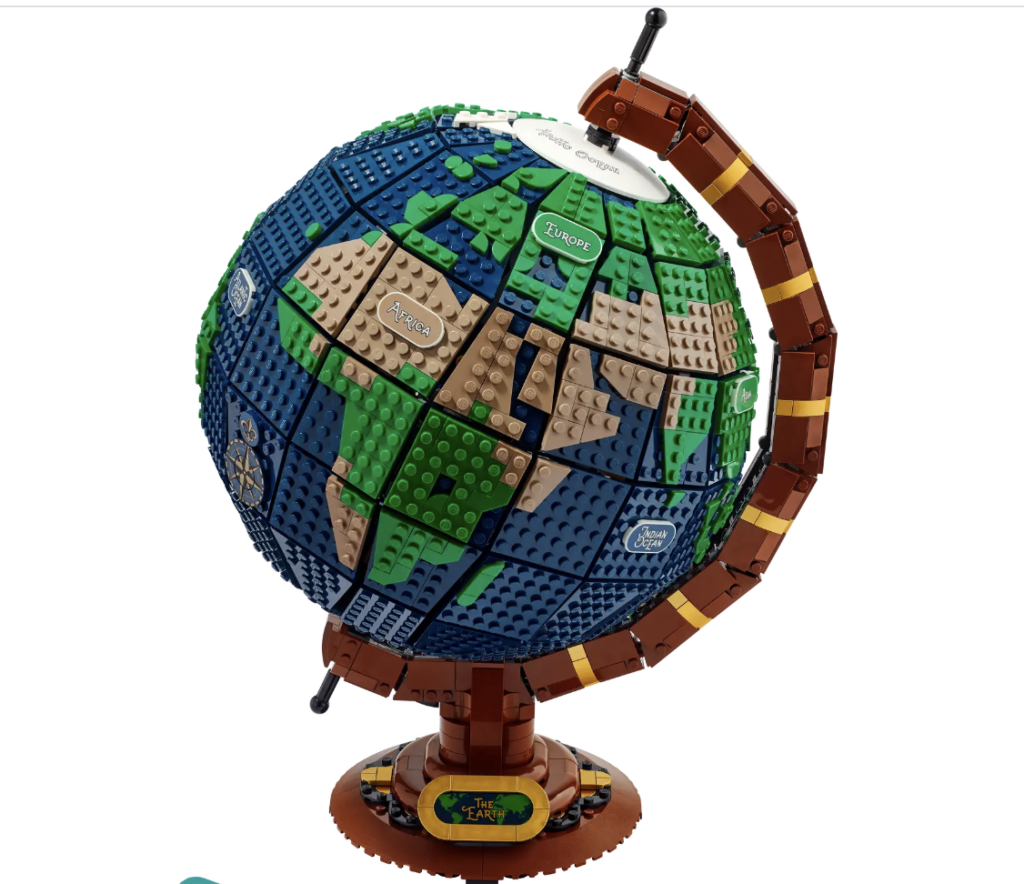
Challenges Ahead:
Facing challenges, including competition in the toy market, addressing environmental concerns, and adapting to changing consumer preferences are all topics the group focuses on and addresses daily.
Lego for All:
The mission to provide accessible and inclusive play experiences for children of all abilities and backgrounds is their main goal.
Expanding the Lego Universe
The Plastic Toy Revolution:
The introduction of plastic toys in the form of automatic binding bricks revolutionized the world of play. Their products became synonymous with the highest standards of quality and imagination.
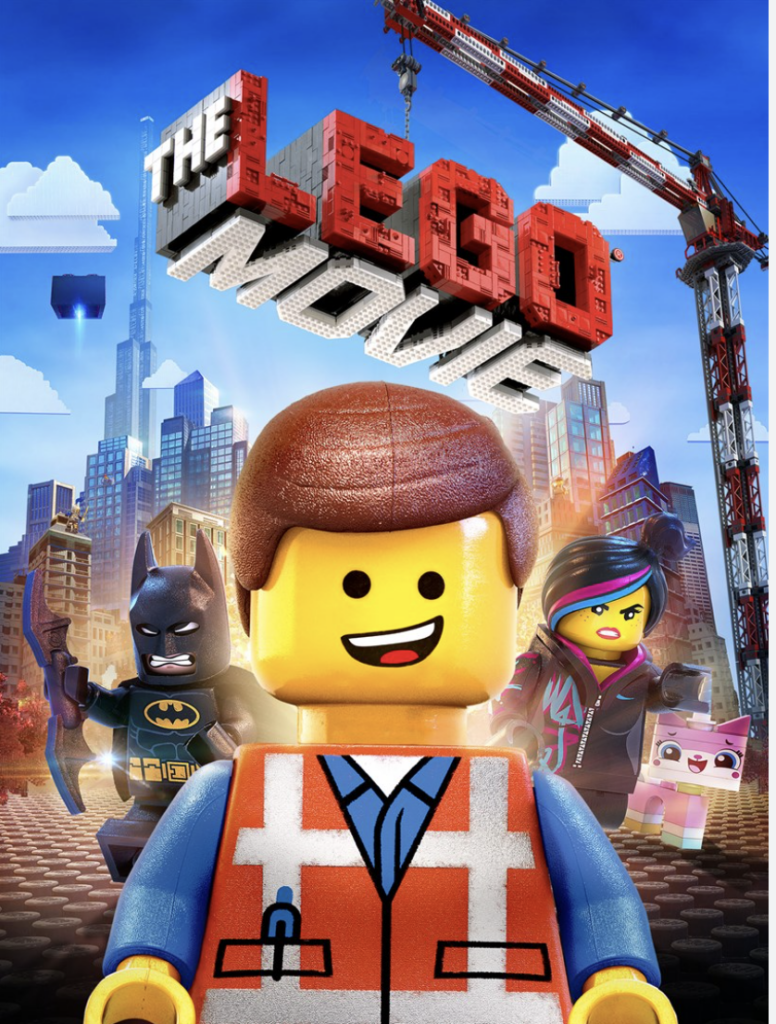
The Lego Movie:
The brand leaped onto the silver screen with the release of “The Lego Movie,” bringing the beloved characters to life in a feature film that resonated with audiences of all ages. More movies followed in the wake of The Lego Movie’s success. Popular movies such as “The Lego Batman Movie continue its block-buster franchise’s winning streak with another round of dizzyingly funny—and beautifully animated—family-friendly mayhem. It was ranked the 23rd-best superhero movie of all time. Audiences polled by CinemaScore gave the film an average grade of “A−” on an A+ to F scale.
Sustainability Efforts:
The group is committed to sustainable practices, including reducing the environmental impact of its elements through initiatives such as using cellulose acetate for certain products.
Inclusivity and Diversity:
The group aims to make its products and marketing inclusive and diverse, ensuring that children of all backgrounds and abilities can enjoy the magic of the toy.
The Future of Lego:
As it continues to evolve and adapt to the changing world, it remains committed to its core values of creativity, learning through play, and providing accessible and inclusive play experiences for children worldwide.
In conclusion, Lego’s remarkable history, from its modest beginnings in a Danish workshop to its global prominence, is a testament to the enduring appeal of creative play. Its commitment to quality, innovation, and social responsibility has secured its place as a beloved and iconic toy for generations. Not only have Lego toys shaped the way children play but they have also had a lasting impact on culture, education, and the way we view the world. As it continues to build the future, Lego will undoubtedly remain a cherished and inspiring part of our lives.
